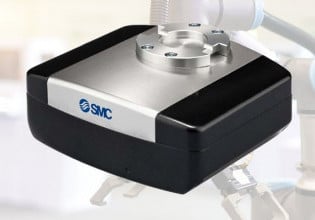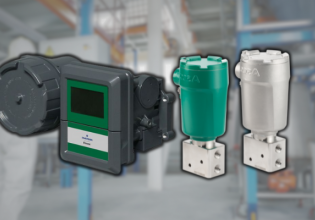Replacing a Control Cabinet with Modules? Beckhoff Says Yes!
Beckhoff Automation is advancing the concept of reducing cabinet space and lowering construction time with their recently announced MX-System.

Beckhoff’s recently announced MX-system - a control cabinet on a chassis. Image used courtesy of Beckhoff
The Control Cabinet
The factory floor consists of coordinated interactions of machine centers, every one of them with many components attached to actuators or other technology that move physical tooling in order to perform work. These machines require customized electrical cabinets, inside is a collection of power supplies, circuit protection, terminal blocks, and carefully labeled wires.
This network of devices and wires requires skilled professionals to design and assemble and it brings many troubleshooting issues over its lifespan. Many manufacturers have successfully reduced the number of wired connections within central control cabinets by using Fieldbus technologies to place remote I/O connections on the machines, but none have completely replaced the entire control cabinet.
Beckhoff is taking the concept of cabinet space reduction one step further with their recently announced MX-System.
All-In-One Control, the MX-System
Inside a typical control cabinet, you might expect to find a PLC, some input and output racks, servo drives, the main disconnect and fuses, and a variety of contactors, relays, and hundreds of terminal blocks, all surrounded by cable trays for the wires. These devices use different voltages and require different wire sizing, some devices are required to be placed a physical distance away from other components. With this complexity, even trained professional assembly technicians can make mistakes. These limitations have made the all-in-one solution a very difficult task.
Beckhoff has introduced the market to a solution that uses a backplane structure where different components can be placed on this backplane. The solution is IP67 rated, meaning the internal electrical components are protected from water and dust. In a way, this can be related to the physical layout of a chassis-based PLC, however in this case, a wider variety of cabinet components are integrated.
Beckhoff has five main component categories that can be added to the backplane; IO modules and IPC modules make up the low power modules that can be added. Relay modules, motion modules, and system modules make up the high voltage AC components.

MX-system includes I/O modules (digital/analog in/out on the left) and motion modules (single channel reversing starter on the right). Image used courtesy of Beckhoff
The MX-System Backplane
This system starts with the backplane which is where all the components are connected and where the electrical power and communications will be distributed. There are four types of backplanes available with two types of slots power and data.
The power slots allow for mains voltage (3-phase 400-480 VAC) and will accept devices such as servo drives, large current relay modules, and system modules (power supplies, coupler, and mains output). These devices will use up a data slot along with the required number of power slots. Some modules use a lower control voltage (24-48 VDC) to perform functions for lower power I/O devices.
MX-System Modules
The system modules include the breakers, fuses, and main switches for the incoming 3-phase power. Bus couplers for EtherCAT and EtherCAT with power allow field connectivity. Power supplies and uninterruptable power supplies (UPS) adapt and maintain power for the system.

MX-system module for disconnecting power, just like a typical cabinet disconnect. Image used courtesy of Beckhoff
MX-System IPC Modules
An IPC or industrial PC is a PC-based controller making use of some PC features like logging and web browser-based HMI applications. While these controllers still use ladder logic, and because the programming interface is integrated with PC programming IDE (integrated development environment) you can also use common programming languages like C, C++, or even C#.
MX-System Relay and I/O Modules
These relay modules are controlled by the Fieldbus protocol, greatly reducing wiring for the coils. The output contact sets are connected with M12 terminators, and the power level of the relays makes them ideal for 2-channel motor and fan starting or 1-channel reversing. Solid-state models are also available.
MX-System Motion and Communication
Beckhoff uses EtherCat communication protocol which typically resides on Ethernet infrastructure. With the MX-System the EtherCat protocol travels through the backplane reducing the use of ethernet cables. Each device that is connected to the backplane using a data slot will have a connection to the main controller.
I/O, relay, and motion control modules (servo and frequency inverter available) are all integrated into the backplane to facilitate power, control, and communication bus bars into one convenient pluggable format.
Applications
Staring at an open control cabinet, tasked with troubleshooting wiring issues is always time-consuming and frustrating. By reducing the number of wired connections and making the control cabinet easier to assemble, we reduce the time of integration of complex automation control cabinets. Integrating multiple functions into a single component is not new in the automation world, but typically these devices all use the same voltage and have a similar function.
The MX-System being able to interface both DC and AC 3-phase main voltage on the same backplane will save space in the electrical cabinet which in turn saves the customer time and money. At Control Automation, we are excited to see the potential of any system that can bring more uptime and faster deployment to the shop floor.






